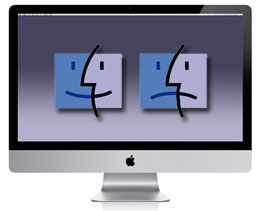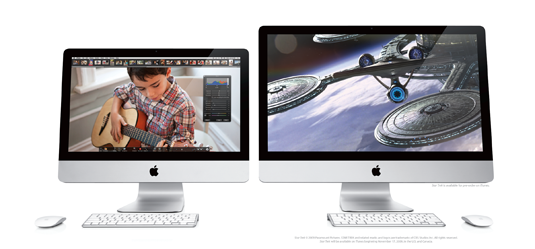 Apple has updated its iMac line of desktops, adding in Thunderbolt support, new quad-core chips, and an HD-ready built in camera. The moves indicate that while consumers as a whole seem to be moving to portables, the Cupertino company itself still is committed to its iconic desktop line.
Apple has updated its iMac line of desktops, adding in Thunderbolt support, new quad-core chips, and an HD-ready built in camera. The moves indicate that while consumers as a whole seem to be moving to portables, the Cupertino company itself still is committed to its iconic desktop line.
Pricing will remain the same for the base model at $1,199. It claims the iMac is the first desktop with Thunderbolt support, and the 21.5-inch model includes one port and the 27-inch model two. Engadget put this to the test, showing off two 30-inch displays being powered off these ports in a video posted to its side. Pretty darn cool.
The HD camera now will support high-definition FaceTime calls between other capable iMacs, and standard definition calls with all other enabled devices. The iMac now comes with the option to order the Magic Mouse or Magic Trackpad at no extra cost. If for some reason you still want the old wired version, you can get that too.
Another new option is the solid state drive on both models. The desktop would also include the traditional hard drive, however Apple would install the operating system on the faster flash-based SSD.
Will you be picking up one of these nice shiny new iMacs?

 My new 21.5” iMac arrived on Friday. I spent the weekend transferring files from my old machine and installing the applications that I wanted. The experience was overwhelmingly positive, but it wasn’t as seamless as it could have been.
My new 21.5” iMac arrived on Friday. I spent the weekend transferring files from my old machine and installing the applications that I wanted. The experience was overwhelmingly positive, but it wasn’t as seamless as it could have been.
